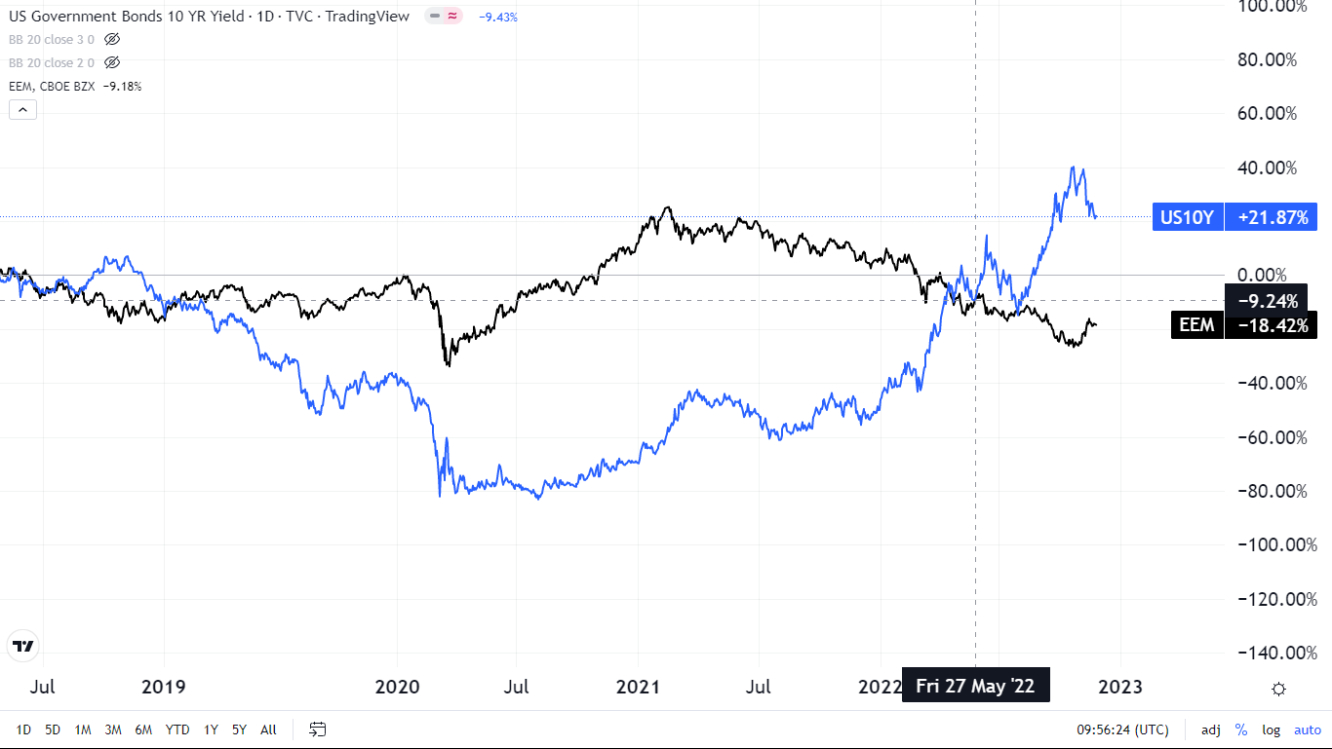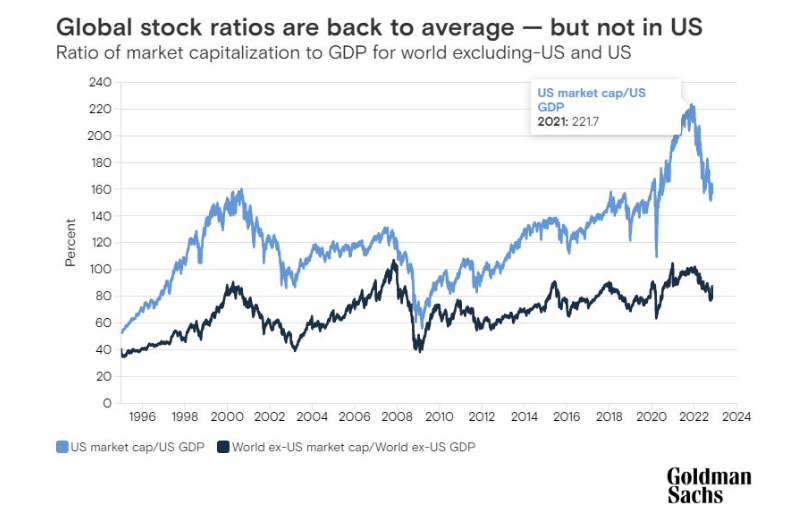Goldman Sachs estimates further deterioration for the financial markets before the bear market gives way to a rise. As noted, the MSCI All Country World Index (black line) has fallen about 19% this year against a 40% rise for the United States 10-Year bonds (blue line), as the diagram below shows.

The fundamentals driving the global equity market have changed dramatically, wrote Peter Oppenheimer, chief international equity strategist and head of macro research in Europe. The cost of capital has risen significantly, hurting valuations for fast-growing companies whose earnings are expected to be realized in the future. Profits at major tech companies have fallen below analysts’ expectations. Higher interest rates and commodity prices have made high-quality companies with reliable earnings and cash flows more attractive.
There is a reversal of fortunes between incumbents and digital entrants in many industries. So, in other words, companies with high dividends, strong balance sheets, and high margins are favored. At the same time, investors may have to deal with a prolonged bear market.
There are two main types of “bear market”: “Cyclical,” driven by a slowing economy and rising interest rates, and “Structural,” driven by shocks like bubbles or a black swan, according to Goldman Sachs (NYSE:GS) Research.
The current recessionary macroeconomic environment is dominated by cyclical factors, typically lasting 26 months. In this context, says the US bank, stocks will need about 50 months to recover. Stocks typically fall 30%, with brief rallies in between, before the market bottoms out. Although many stocks worldwide are trading at low valuations, US stocks are still at levels similar to those seen at the peak of the tech bubble in the late 1990s.
On the other hand, the bank’s analysts believe bond yields still have room to rise as US policymakers focus on keeping economic conditions tighter to tame inflationary pressures. The placements signal that the market has yet to bottom out. Investors have become more defensive and tweaked their portfolios to take less risk. Also, flows into equity funds remain strong, especially in the US.

Historically it is better to invest in stocks immediately after the bottom than just before it: 12-month average returns are higher one month after the bottom than one month before. For this reason, it is believed that it is too early for a potential upside in the market.
Global Markets on a weekly basis had a positive outlook where especially the rhythm was kept by the US stocks resulting in gains on the major indices as S&P 500 gained +1,53%, Dow Jones Industrial Average +1,84%, Nasdaq Composite +0,68%, and DAX in Europe gained +0,76%.
